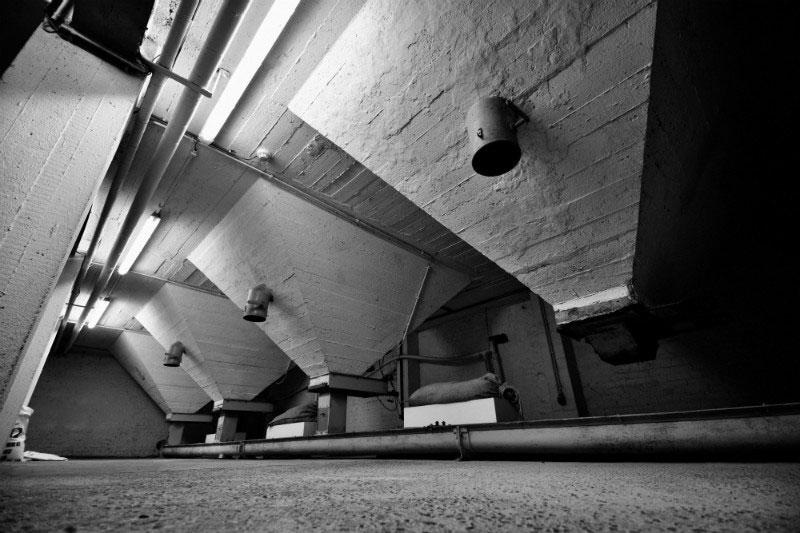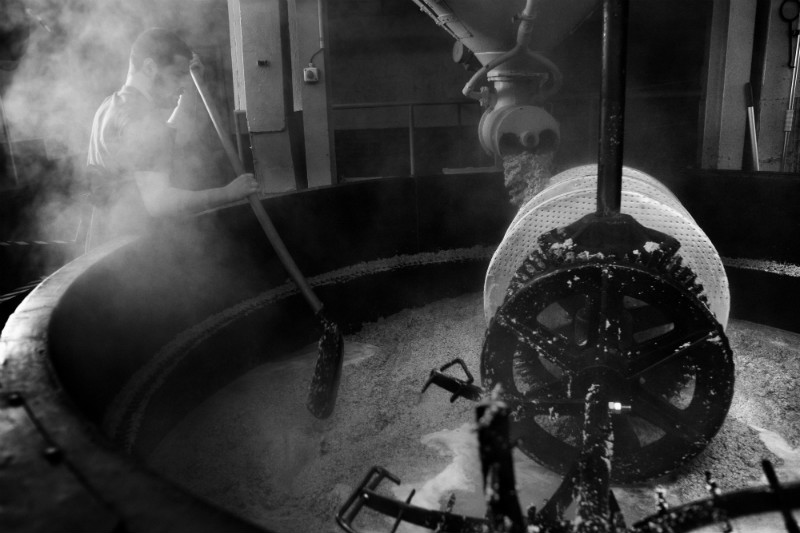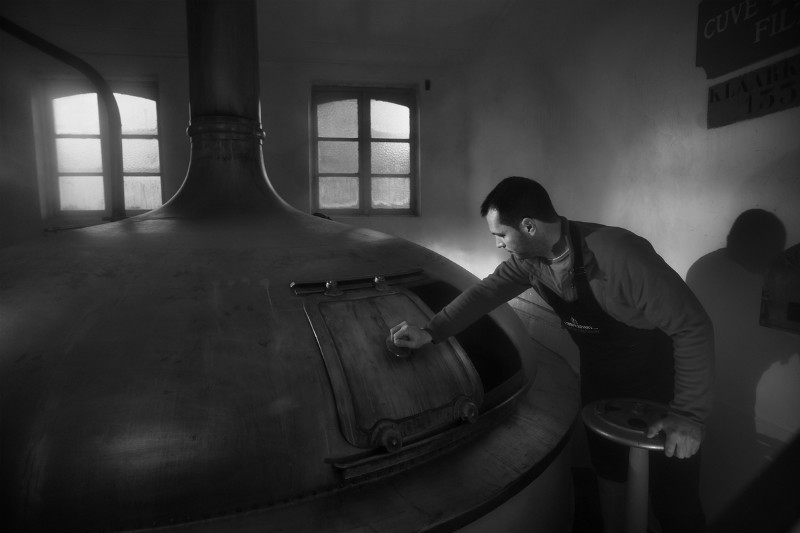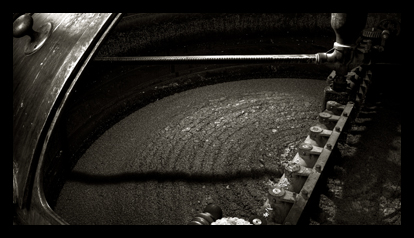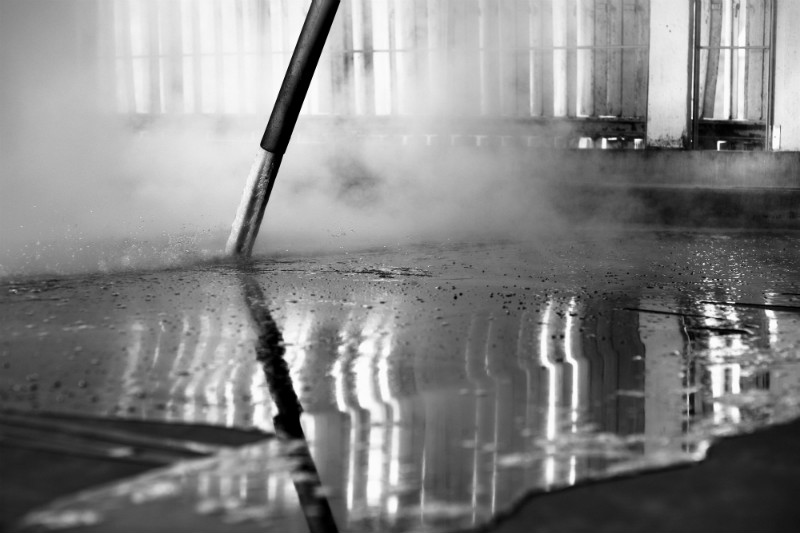Lambic brewing
process

The mash tun
In the mash tun, the milled cereals are mixed with water that has been heated to its boiling point and then mixed with cold water to obtain the ideal temperature of 63°C.
This mash tun (dating from the 1920s) is equipped with a so-called “Madammen” (perforated copper disks) system.
Once the mixing process is complete, a saccharification process starts, which lasts 15 minutes. During that time, enzymes convert the starch into fermentable sugars.
Half of the contents of the mash tun is then filtered through the “Madammen” system and transferred to the boiling kettle.
The mash tun is again filled with hot water in order to reach a temperature of 73°C for the second saccharification phase.
A second filtering process of half of the contents of the mash tun then takes place with the “Madammen”, after which the filtered mash (the wort) is added to the contents of the boiling kettle. This mixture is heated to 96°C, after which the mash still remaining in the mash tun is added.
The lauter tun
Here the wort (liquid part) is separated from the spent grain. The brew is left to stand in the lauter tun so that the spent grain can sink to the perforated bottom, forming a natural filter. It takes approximately 2.5 hours for the wort to be separated from the spent grain, after which it is again transferred to the boiling tank.
The boiling kettle
In this kettle the wort is boiled for 4 hours, for the following reasons:
- To sterilise the wort.
- To stop the action of the enzymes.
- To cause unstable components to coagulate.
- To add aged hops.
After the boiling process, the wort is transferred to the cooling tun. This is one of the most important and mysterious phases in the production of a good Lambic beer.
The cooling tun
Here the wort is cooled to ± 23°C in an entirely natural manner. This is a crucial phase of the spontaneous fermentation process, as it is during the exposure of the wort to the atmosphere that the 2 micro-organisms (Brettanomyces Bruxellensis & Brettanomyces Lambicus) will mix with the wort and result in 100% spontaneous fermentation.
As the air composition is different throughout the world, it is only in the Pajottenland region that these essential micro-organisms can be found in a specific and unique concentration.
The brewing of Lambic beer is a seasonal activity, which means that we only brew between September and May. If the outside temperature is too high (> 15°C), there are too many bad bacteria in the air, which has a negative impact on fermentation.
In the morning, the wort is transferred to the Foudres, the Pipes and the casks.
The Maturing
room
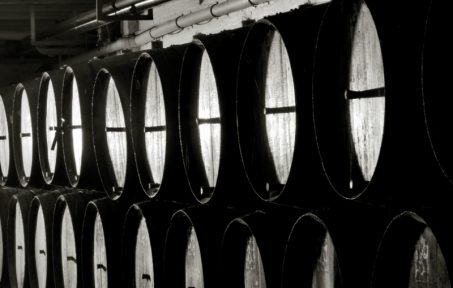
The maturing room
There are 2 types of barrels in the maturing room:
The Foudres (currently 4,000 litres). The old Foudres (6,000 litres) were entirely dismantled and taken to Portugal, where they were inspected by expert coopers.
The Pipes (600 to 650 l) : the darkest barrels, originating from Porto. They are entirely made of oak and are mainly used for the old Lambic beers (Oude Gueuze and Oude Kriek).
